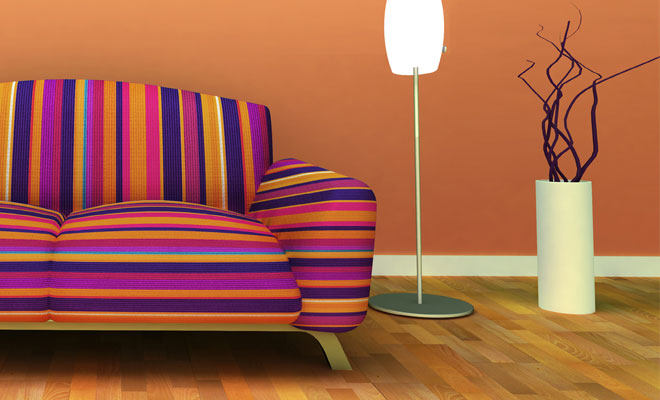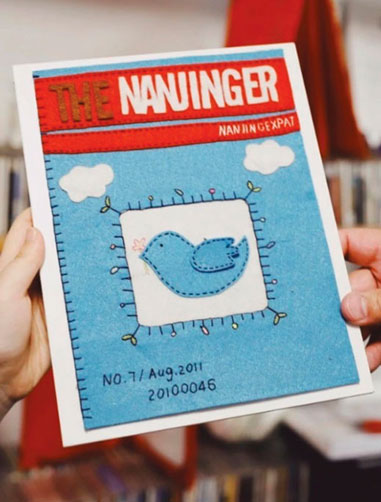If there was ever a way to make a concrete shell of a home cosy, nothing could be easier than to hang up a curtain, throw down a rug, turn off the strip lighting, strike a match to a candle or five and snuggle down to sip a cup of hot chocolate.
Many Chinese, however, are going a lot further than just these simple measures. With bigger homes comes the desire to make them a venue for entertaining guests, and naturally to make them feel as comfortable as possible in the process.
It’s a veritable goldmine.
Asia processed 12.92 percent more cocoa in the third quarter of 2017 than the same period a year prior, according to the Cocoa Association of Asia. That means more chocolate is being produced, which means more chocolate is being consumed.
The American behemoth Hershey’s, who are just a couple of stops short of complete domination in China’s chocolate market, has been in the business for more than a century. A senior officer of the company has forecast that chocolate sales in China should grow to ¥27 billion by 2019, up nearly 60 percent from those in 2014.
This is driven by demand from the growing urban population, which in turn, means the economy must be doing pretty well. In the last month, Chinese Premier of the State Council, Li Keqiang, speaking at a Mekong River regional cooperation meeting in Cambodia, said that China’s economy grew at 6.9 percent in 2017, remarking that it was, “better than expected”. Many forecasters were predicting a bleaker picture, but the news also means that the year-on-year slide in growth rate has been reversed.
- From Central Heating to Hotpot; China’s Luxurious Warmth!
- Crème of Cosy; Old Timer Haunt Still Tops in the Cold
- Lies, Damned Lies; Fake Character is China’s Latest Big Business
The last time China’s GDP growth was at 6.9 percent was in 2015, also the year in which furniture sales increased 16.5 percent while building and decoration material sales grew by a whopping 20 percent, representing two of the fastest growing retail categories, according to China’s National Bureau of Statistics. Indeed, the innovative home decoration and furnishing industries was a ¥4 trillion market in 2016, reported China Daily.
Perhaps it is all not so surprising, when one considers the average home size in China has jumped 300 percent over the last 3 decades. In 1980, a person could expect to have just 9 square metres to themselves. By 2014, people were stretching out over 32 square metres of personal home space, making for something much more than a functional place to live, or mainly, sleep.
Not only have Chinese homes grown in size, so has building quality. Sky-high property prices combined with competition in the real estate industry, along with advances in building technology, mean that property purchasers are a pampered bunch. Under-floor heating and marble floors, for example, have become almost prerequisites. Given the astronomical sums involved in buying property in the first and second tier cities of today’s China, it might not quite be value for money, but at least homeowners are going to be mighty cosy.
That Ikea does not sell paint or building supplies is also that which has made China its biggest growth area. With a home no longer a concrete shell, having being purchased with wall decor and many fixtures and fittings included in the price, all that is left to do is furnish it and cosy it up a little. Ikea’s candles are a big hit with the Chinese, not only on account of their price, but also for their place in Chinese culture.
On the last day of Chinese New Year, it is traditional for candles to be lit and placed outside houses as a means to guide wayward spirits as to a return to their resting place. The convention gave way to the Lantern Festival while candles also feature in both the Mid-Autumn Festival and many a buddhist rite, being placed in front of shrines or statues and images of the Buddha as a mark of respect.
It is perhaps somewhat ironic that the other end of the home decoration spectrum in Nanjing is in fact, in the physical world, Ikea’s next-door neighbour.
While the new middle classes are picking out candles of Swedish descent for next to nothing, over at Red Sun Macalline, the nouveau riche are pondering over their “faux baroque” bedroom and whether a Mona Lisa should hang over the headboard.
- Big Green Business
- Nanjing City Wall; Oldest, Longest, Highest, Simply the Best!
- Good for Business is Good for Us
The Nanjing Red Sun Macalline store in Yuhuatai District was said to be the biggest home decoration mall in Asia when it was completed. Now, the group operates over 200 such stores in China, the Renaissance is also now being complimented by the Yankee. While the former may have been a cultural bridge between the Middle Ages and modern history; more recently acting as a conduit to wealthy Chinese perceptions of the well bred, curiosity in the latter is indicative of a more tasteful maturing in the Chinese interest for home decoration.
On 23 April, 2017, Red Sun Macalline signed an agreement with the Heritage Home Group to open more than 100 Thomasville & Co. stores all over China during the next few years. Among the first of those, the Nanjing branch on Mengdu Da Jie, very close to the Olympic Centre.
The North Carolina based, 114 year-old American brand name certainly has sufficient cosy credentials; its ED collection, according to the firm’s website, “…Blends the quality and reputation of Thomasville home furnishings with the relaxed design aesthetic of Ellen [DeGeneres]”.
Mr. Song Hua, General Manager of Nanjing Jinye Furniture Co. Ltd., the appointed local agent for Thomasville, spoke with The Nanjinger on the subject of China’s new found passion for cosy, explaining, “10 or 20 years ago, while Chinese people were indeed watching American movies, they were concerned with the heroes and storyline, and paid little attention to the furniture in the set. Nowadays, all things American are coming to China in search of publicity, and so Chinese people now have easy access to cosy products that can make a home more comfortable, and publicity can improve their perceptions of the products. Chinese people are more concerned about the grade of a product; after purchasing, the product becomes a symbol of their own identity”.
Cosy, Thomasville style, however, does not come cheap. To have the very same sofa as Ellen has in her living room will leave a hole in your bank account only a few hundred kuai short of 40,000.
Among the firm’s other offerings, their so called “Loveseats”. Contrary to the conjuring of an over-active imagination, this is a range of sofas that more accurately (and thankfully) can be thought of as a cosy nest.
Forecasters of fashion are saying that “Còsagach”, a Scottish Gaelic term that is being marketed by Visit Scotland as “snug, sheltered and cosy” (native Gaelic speakers are in disagreement over the translation), is set to be a lifestyle trend of 2018. Among its Ten Commandments, throw not one, but three, rugs on the floor, on top of each other. That ought to do the trick. It will also keep the home decoration coffers of China ticking over nicely too.











